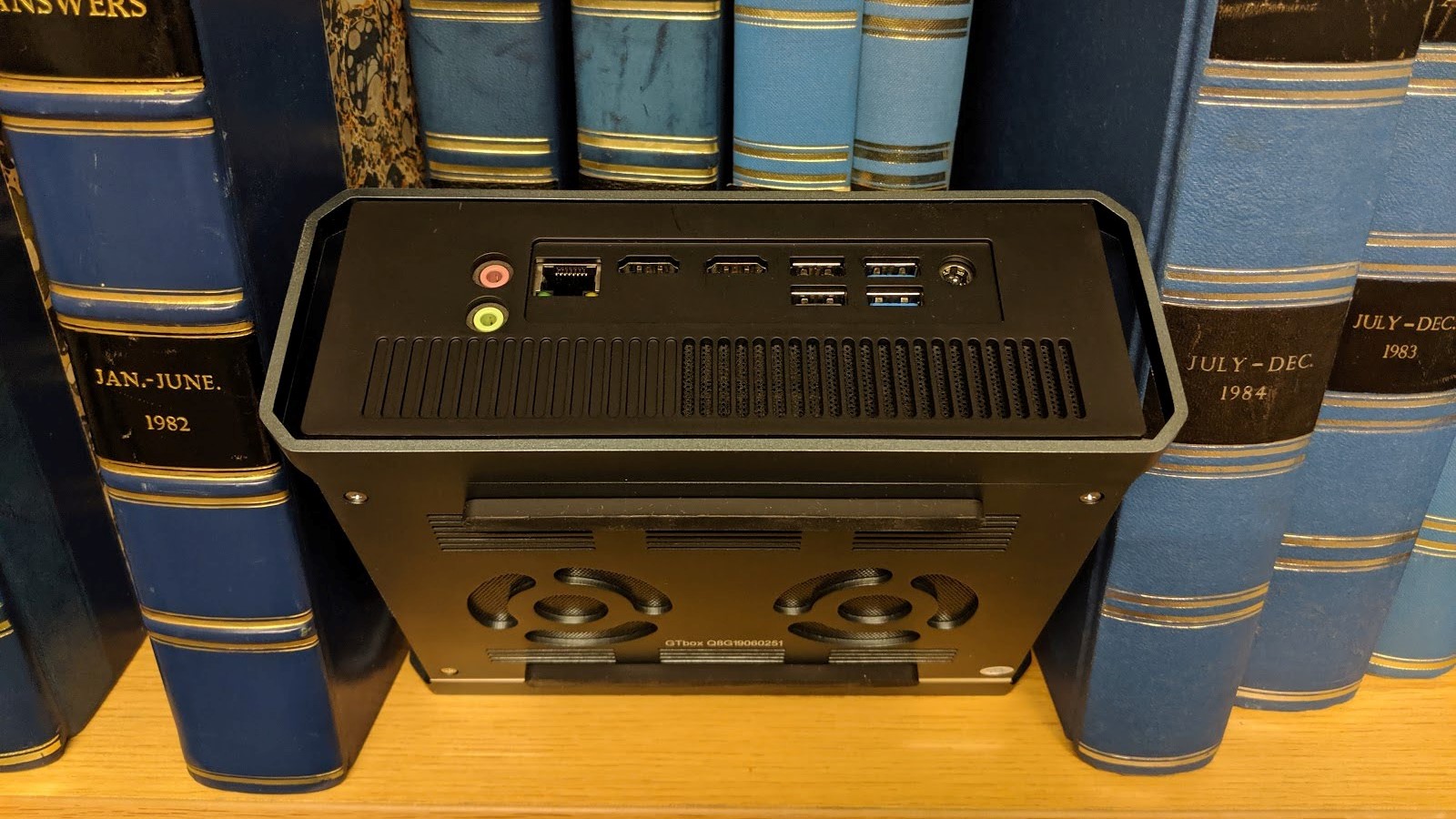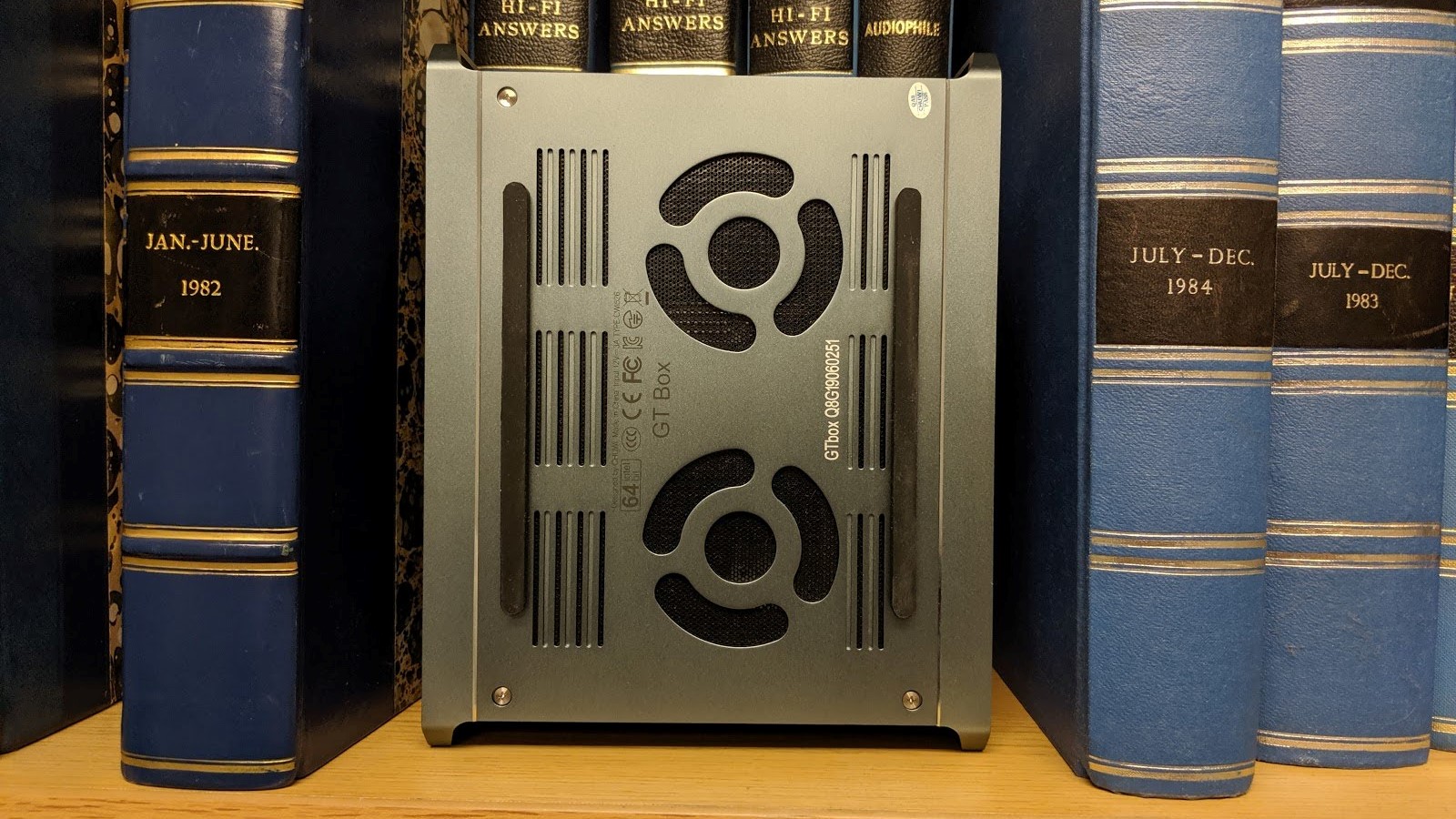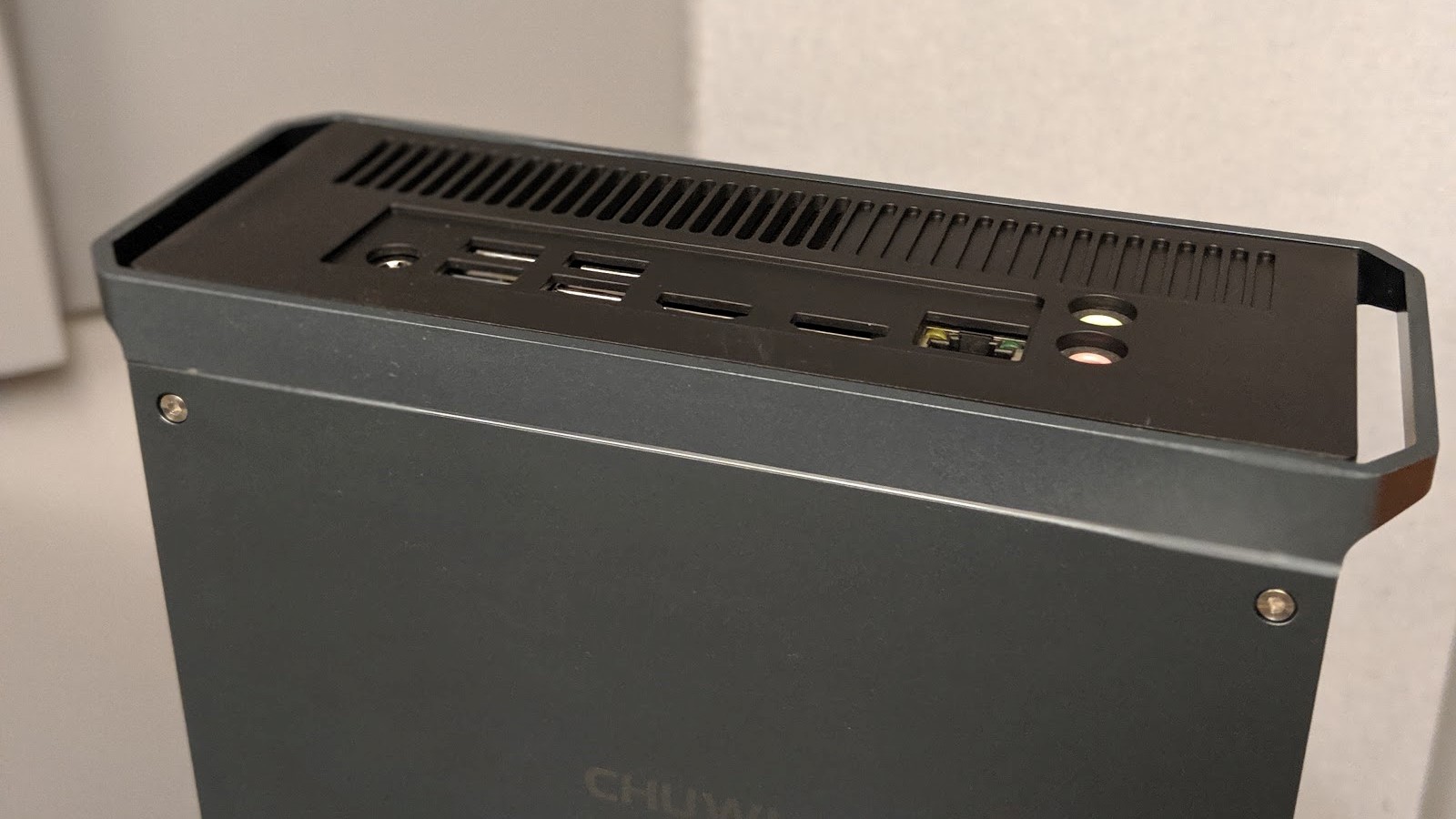TechRadar Verdict
Chuwi’s GT Box is not a bad product per se but it is facing a lot of competition which makes it hard to recommend at the current price point. It is aesthetically pleasing with a good design but a laptop would make more sense.
Pros
- +
Good expansion capabilities
- +
Pleasant aesthetics
Cons
- -
Expensive for what it offers
- -
Big for what it does
- -
No card reader
Why you can trust TechRadar
Online Chinese retailer, Gearbest, sells the GT Box mini workstation PC for as little as $328.22 at the time of writing. Note that, while this price includes delivery, it is exclusive of any taxes that may be levied by the relevant authorities or the courier companies on behalf of the vendor.
One year after Chuwi unveiled its Higame PC, one which had the revolutionary Intel Core i7-8809G Processor with Radeon RX Vega M GH graphics. Back then, we noted that Chuwi’s first foray into the thin high-end micro gaming/workstation PC arena is a mixed bag. Sadly, we found out that it was too expensive compared to the competition.
Will its toned-down smaller brother, the GT Box, fare better or will it still be marred by the same issues that we encountered before? Read on to find out more.
- Want to buy tech from online Chinese retailers? Read this first.
Design
The GT Box borrows the chassis of the Higame PC with some minor alterations; the enclosure still looks as if the old Apple Mac Pro workstation has been shrunk in size, repainted and without the Apple logo. Even the carrying handles are here but they are too small (and sharp) to be useful.
It is still as stylish as its brother and the build quality is in line with what we’d come to expect from Chuwi over the past few years. Solid, unassuming and resolutely low key. Metal is the main material here and as we noted in the review of the Higame, “the tone is more industrial though, with sharp edges, a darker color theme and plenty of air vents and openings to facilitate air circulation.”

The chassis can be positioned horizontally or vertically, with a rubber strip located near the air vents to lift it up by a fraction of an inch; this facilitates. Opening the GT Box is easy enough but necessitates a Torx screwdriver, and doing so gives you access to the components inside.

There’s no Thunderbolt 3 port like the Higame on the front, only power button. The back contains two HDMI ports, a GbE Ethernet port, a power socket, two audio connectors and four USB ports, two of them USB 2.0. Still no card reader though or optical out.

Hardware
Here is the Chuwi GT Box configuration sent to TechRadar Pro for review:
CPU: Intel Core i3-5005U
Graphics: Intel HD5500
RAM: 8GB DDR3
Storage: 256GB NETAC
Ports: 2x USB2.0, 2x USB3.0, 2x HDMI, audio jack, RJ-45 gigabit Ethernet
Connectivity: Intel Wireless-AC 3165, Dual-band WiFi 2.4GHz/5GHz, Bluetooth 4.0
Weight: 860g
Size: 17.30 x 15.80 x 7.30 cm
There is still an acute and chronic shortage of Intel CPU worldwide; more specifically, whatever capacity Intel has is dedicated to the high margin products and to its biggest clients. That perfect storm means that smaller manufacturers like Teclast or Chuwi are left with the scraps.
Sign up to the TechRadar Pro newsletter to get all the top news, opinion, features and guidance your business needs to succeed!
What it means in practice is that they have to fall back on older technology. Take for instance the processor that the GT Box comes with; it is a four-year old Intel Core i3-5005U. It has two cores and four threads, 3MB cache and is clocked at up to 2GHz; this is not a bad chip per se but it doesn’t come with the sort of improvements to its graphics sub-system (the Intel HD5500) and this shows in the benchmarks (more on that later).
The rest of the configuration is pretty much what you’d expect from a device at this price point; 8GB of memory (LPDDR3 in dual channel), a 256GB Netac SSD, an M2 extension port, a SATA connector and a power adaptor, a 12V3A/36W brick model.

In use
This is how the Chuwi GT Box performed in our suite of benchmark tests:
Passmark: 1569
Passmark CPU: 3157
CPU-Z: 189.3 (single-thread); 558.4 (multi-thread)
Geekbench: 518 (single-core); 1100 (multi-core); 2177 (compute)
CrystalDiskMark: 555 MBps (read); 479 MBps (write)
Novabench: 722
Atto: 534 MBps (read, 256mb); 467 MBps (write, 256mb)
Windows Experience Index: 4.9
The GT Box will excel as an office PC or an entry level workstation; just don’t expect it to play the latest AAA games. It uses an SSD which is a much better option that the usual eMMC (soldered storage) that is found on entry level workstations and computers. Otherwise, it is a bog-standard, run-of-the mill personal computer that won’t let you down should you focus on light office applications.
Competition
None of the big three (Lenovo, HP or Dell) have a desktop computer capable of rivalling the GT Box. However, economies of scale means that unless you absolutely need a traditional box with a bit more versatility, you will be better buying a laptop.
Amazon sells the Lenovo Ideapad S145 laptop for $339, marginally more expensive than Chuwi’s offering. You get a far more powerful CPU with a lower power dissipation and twice the storage capacity (a 512GB SSD). Obviously included in the deal is a display, a keyboard and trackpad plus the battery and a webcam.
Elsewhere, Beelink provides with a similar-configured PC, the U55, for far less ($269 at Gearbest). It has the superior expansion capabilities as well with a DisplayPort connector, a microSD card slot and an additional Type-C connector.
The L55, from the same manufacturer, offers an extra DisplayPort plus two LAN ports for just over $300; we were chuffed enough by the features and performance to give it a 4.5/5 rating although its price has crept up by 10% since August 2019.
The X55 on the other hand adds a second HDMI port, swaps the CPU for something more frugal and swaps the memory for the newer LPDDR4 type. The price is bumped to $290 as well, still cheaper than Chuwi’s.
Final verdict
If you don’t care about looks, then the GT Box is a poor purchase compared to the rest of the market. A laptop from a reputable vendor costs barely more and provides far more flexibility while similar devices with more features can be had for less, as much as 18% cheaper.
Yes, the GT Box is good looking, yes it is made of premium material and has space inside for additional components. We just think that features are more important than looks.
In the end, Chuwi made the same fundamental mistake as it did with the Higame, market a product that doesn’t have any compelling unique selling points to justify a higher price tag.
That is not made better by the ongoing production issues that Intel is experiencing, something that in the short term is choking smaller players and causing immense pain to them.
- Also check out our roundup of the best workstations of 2019

Désiré has been musing and writing about technology during a career spanning four decades. He dabbled in website builders and web hosting when DHTML and frames were in vogue and started narrating about the impact of technology on society just before the start of the Y2K hysteria at the turn of the last millennium.
